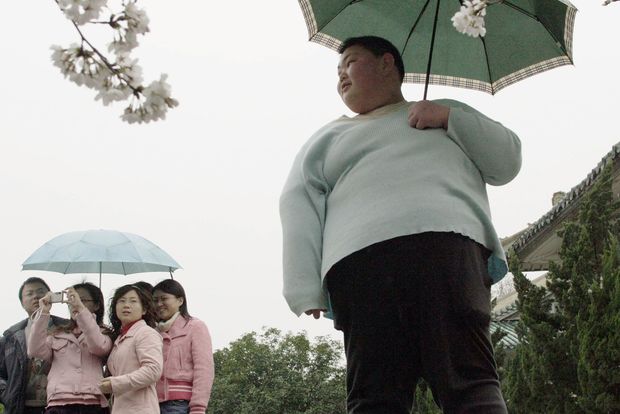During a recent visit to China I knew I was being watched. My family were also frequently photographed and videoed.
But I don’t believe there was anything sinister about the surveillance – it was just that we were clearly behaving in a way seen as unusual or old fashioned withinmodern China. Rather than jumping on the bus or taking a taxi we cycled, in travelling down a river we opted for kayaks as opposed to a seat on a large pleasure boat and we also walked and made use of public transport (including both ‘hard’ and ‘soft’ sleepers) to move around the country. For our meals we did not immediately head to one of the growing number of westernised fast food establishments that can now be found in most reasonably sized Chinese towns.
In chatting to some locals their view of the West was that we all have amazingly high incomes and excellent standards of living. We also all drive around in large cars, are very ‘brand conscious’ and eat at McDonalds or KFC. Moreover a growing body of evidence now suggests that, as Chinese citizens become more affluent, they are beginning to adopt such perceived western practices. On average their meals now contain more than twice as much oil and meat than in the 1980s and over half of young Chinese adults no longer undertake any regular exercise. Forty-five percent of the population identify shopping as their favourite leisure activity and China has rapidly become the world’s largest beer market.
A colleague who had visited China twenty years ago told me that I would have no difficulty looking over the heads of the Chinese to get a good view across Tiananmen Square. But this was no longer the case – in fact even Chinese boys aged 6 are now 2.5 inches taller than they were 30 years ago. Unfortunately the Chinese have also become wider as well as taller and a recent survey published in the Lancet reported that 28 per cent of the population – around 350 million individuals – are now overweight or obese. A particular concern is childhood obesity – possibly exacerbated by the ‘one child policy’ – with the proportion of obese boys being almost double the proportion of obese men (at 6.9 per cent and 3.8 per cent respectively).
Such figures represent a major public health challenge with growing numbers of individuals developing heart disease and diabetes. The prevalence of diabetes in China has risen more than tenfold during the past three decades and an estimated 11.6 per cent of Chinese adults are now diabetic.
Before I had travelled to China I had been aware of concerns about their outside air quality – and even took some re-breathable masks with me. But, with such a high consumption of cigarettes within China – around half of all men smoke – there often seemed no discernible difference in air quality inside or outside buildings. In fact I often felt it would have been more sensible to put a mask on when I entered a hotel lobby as opposed when I exited. More than one-third of the world’s lung cancer patients are now Chinese and the estimated death rate for Chronic Obstructive Airways Disease (COPD) in China is thirty fold greater than Japan.
China is a large and complex country but I believe the developed economies of the West could serve the Chinese population much better than simply selling them cars, clothes, cigarettes and calories. As the Chinese government seeks to further develop their health care systems – including public health – we should strive to find ways to work with them including, perhaps, exporting skills, knowledge and innovations that might actually improve the health of their population. Some have already highlighted the enormous opportunities available for tele-medicine across China in addition to more cost-effective approaches to health screening and disease prevention.
What happens to the wellbeing of the citizens in a country as large as China should really matter to all of us.






Comments